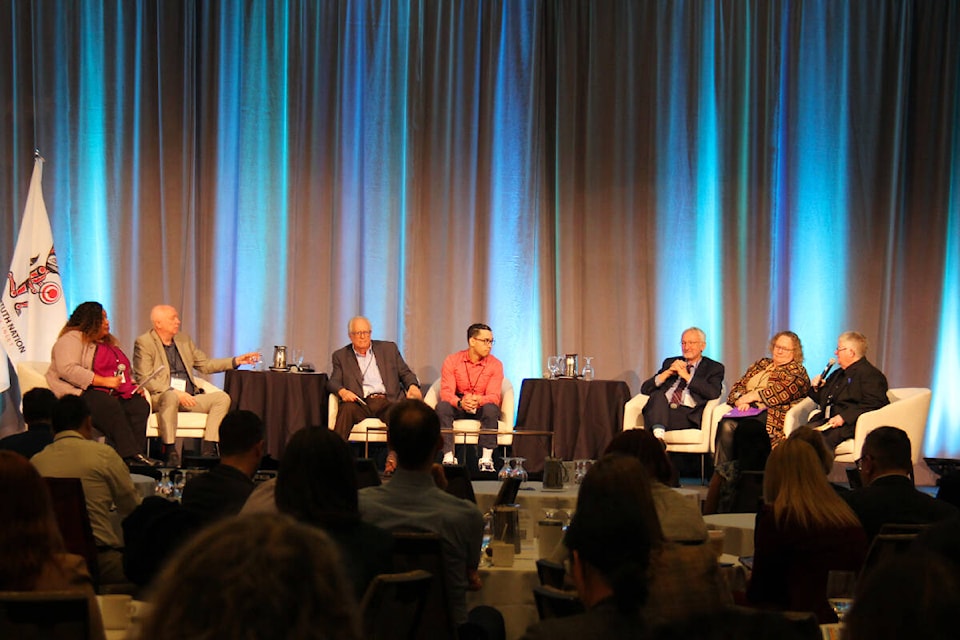B.C. municipal leaders are gathered in Vancouver this week to discuss housing, with many concerned that the province is not paying enough attention to the infrastructure and work force required to pull off its supply demands.
The province is expected to grow by about one million people in the next decade, hitting 6.65 million people in 2034, according to a January BC Stats report. By 2046, the population is projected to be 7.9 million – a 44-per-cent increase from 2023.
READ MORE:
With that growth comes challenges around building up the current supply and densifying, while also making sure the infrastructure stays on pace with the development. Some municipalities are well-positioned to expand on current development and planning practices, while others are calling the province’s housing targets short-sighted with unreasonable asks.
Mayors on a Union of B.C. Municipalities panel discussion Tuesday morning (Feb. 13) agreed a massive increase in housing is needed, but said a lack of engagement by the province with municipalities has left some significant gaps in the plan to get there.
Namely, the mayors of Nanaimo, Burnaby, 91ԭ�� City, Nelson, Victoria and Richmond expressed that they don’t believe the province has grasped the level of infrastructure upgrades that will be required to support an influx of homes.
Things like sewage and underground utilities will have to be expanded upon greatly if single families homes transform into six-unit housing – the number B.C. is now allowing up to. This is of particular concern for older municipalities, where infrastructure may date back decades.
Burnaby Mayor Mike Hurley says their infrastructure was built in the 1950s and ‘60s and the city estimates it will cost about $1 million for every 100 metres of single-family housing that is converted to sixplexes.
Speaking later in the day, Housing Minister Ravi Kahlon disputed that calculation, saying it would only be accurate if “every single inch” of the city needed additional services.
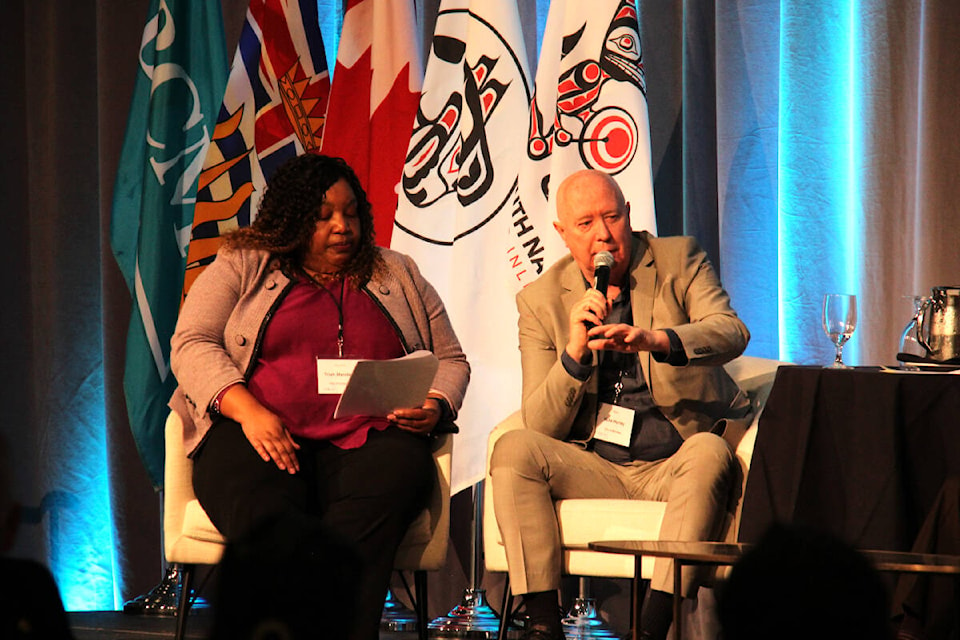
Nelson Mayor Janice Morrison said things are even worse in her community, where the infrastructure is 100 years old. This is the case for many rural communities, which deal with further challenges of septic systems and, at times, unregulated water supplies.
B.C.’s housing targets are so far mandated for communities with a population of 5,000 people or more. Morrison said that still leaves plenty of small municipalities with unique challenges. She added that many of those places don’t even have planners on staff.
In September, Kahlon announced the first 10 municipalities on the province’s “naughty list,” meaning they aren’t stepping up enough when it comes to housing.
READ MORE:
READ MORE:
Abbotsford, Delta, Kamloops, the District of North Vancouver, Oak Bay, Port Moody, the District of Saanich, Vancouver, Victoria and West Vancouver were each given targets to complete in the next five years. According to the timeline, the municipalities are set to have their first evaluation in March – six months after the announcement – and then every year thereafter.
Between the 10 municipalities, they’re expected to produce 60,000 new units. It would be a 38-per-cent increase overall in the communities compared to historic trends.
However, those targets are still based on 75 per cent of what each of the municipalities have said is needed.
Two months later, in November, the NDP government brought in Bill 44 for “upfront” zoning. It’s aimed at increasing housing supply in communities by requiring local governments to shift their planning process, pre-zone land to meet housing needs and reduce the use of current rezoning processes.
READ MORE:
One of those streamlining processes is the elimination of public hearings for rezoning developments that are more than 50 per cent residential.
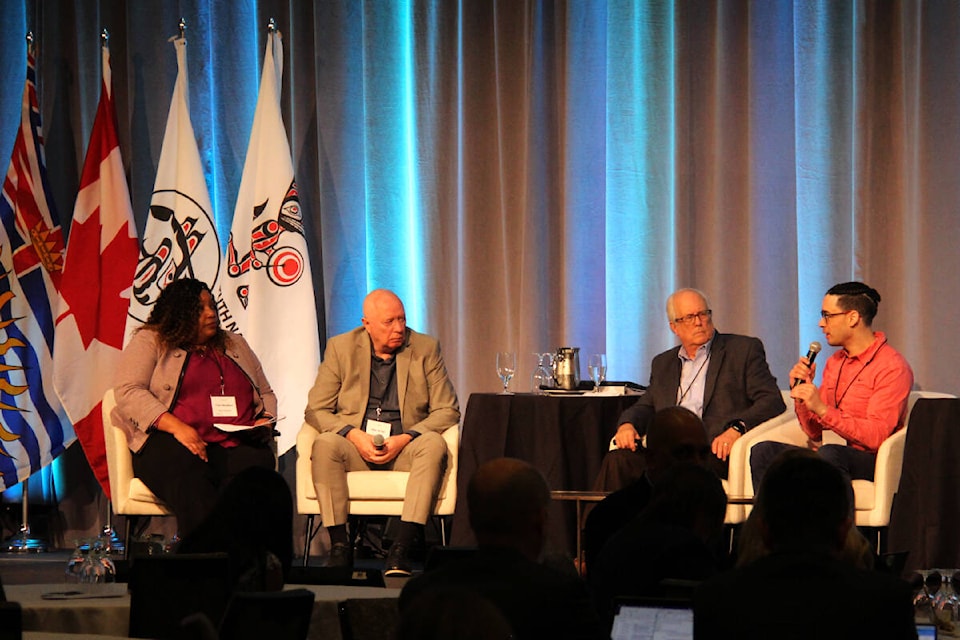
For 91ԭ�� City Mayor Nathan Pachal, the elimination of public hearings is a strength in the province’s suite of housing legislation over the last several months.
“It’s really given us the opportunity as the city to say, ‘OK, how do we actually get meaningful consultation from residents that is not a public hearing?’”
But Richmond Mayor Brodie Malcolm sees that as more of a weakness.
“We all know as politicians that they can be draining and difficult, but that is the public’s time when they can come and speak to a particular issue. I don’t know. I have no idea why the government of the day is taking away the public hearings.”
Another major concern is around active transportation. Tuesday’s mayors panel agreed the province’s measures to increase housing development and reduce parking in areas near transit will inevitably place a far greater burden on things like buses and trains.
READ MORE:
In many communities, the mayors said, the capacity simply isn’t there. In more rural areas, transit may not exist at all.
“There’s no way to densify as much as we need to densify if we’re not planning on how to move people in and around the housing as well,” Victoria Mayor Marianne Alto said.
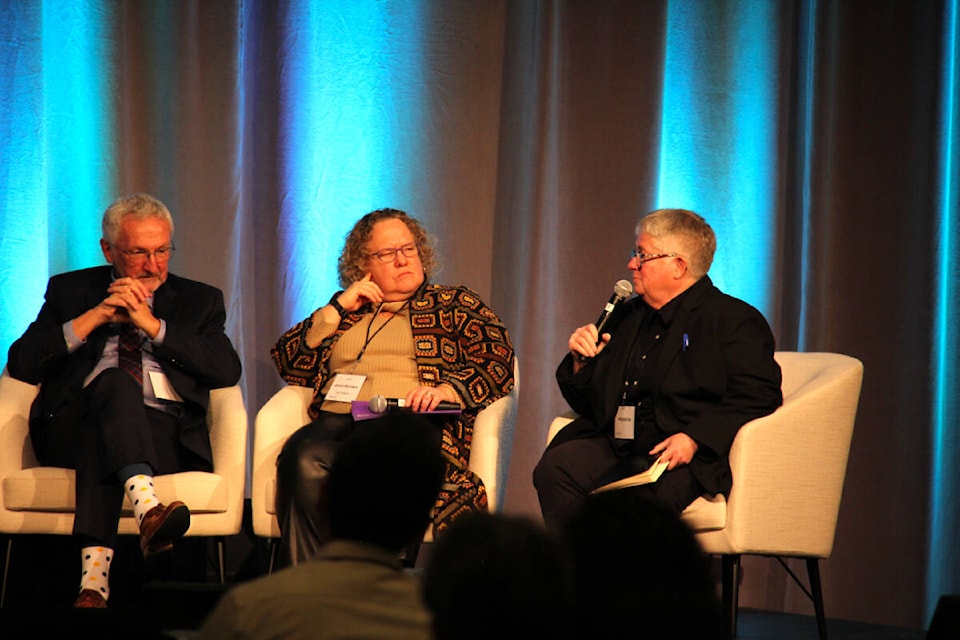
Tuesday’s mayors panel further questioned whether B.C. has the workforce to build the homes municipalities are being urged to approve.
The British Columbia Construction Association estimates the industry will be short 6,000 workers by 2032. That’s actually an improvement over recent years’ estimates, but the association says the situation remains dire. Speaking last October, association president Chris Atchison said high living costs, low housing affordability and better opportunities elsewhere are to blame.
Workers are even harder to come by in more rural areas, Nelson’s mayor said Tuesday. Morrison said developers in those communities often have to pay to bring workers in from elsewhere, including covering the cost of their food and accommodation – becoming prohibitively expensive.
“I think this is very challenging for small communities.”
The mayors said they appreciate the province’s drive to address the housing crisis as quickly as possible, but expressed Tuesday that the building target legislation feel like a “one-size fits all” approach that fails to address the unique challenges of different municipalities.
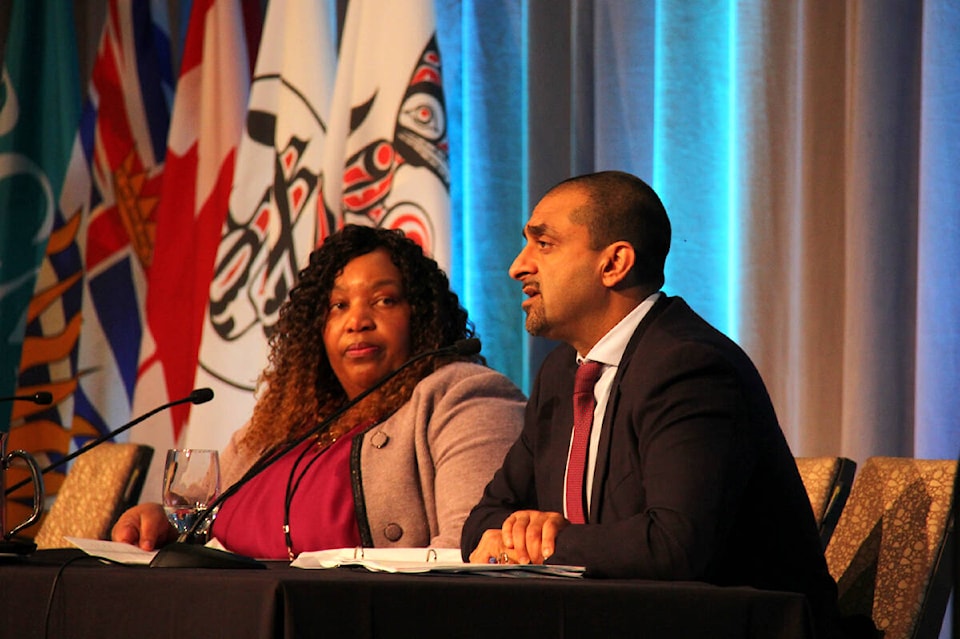
Kahlon, however, said the issue of housing affordability or access to housing is the same “whether you’re in a small town in town in north B.C. or whether you’re in a big city like Coquitlam.” He added that he believes the legislation brought forward reflects the nuances between communities.
“That’s why small-scale multi-units is not in communities less than 5,000, because often those communities don’t have the infrastructure to support that type of housing. That’s why the [transit-oriented development] is only where there’s a high level of transit or where there’s service that’s 15 minutes.”
The mayors said some of the challenges could have been avoided if the province had engaged with them more before introducing measures. In reality, the leaders said they had next to no contact with the government ahead of time. Pachal said the only information 91ԭ�� City got was from government press releases.
Kahlon pushed back on that. He said some of the legislation the province has brought forward actually stems from a 2018 Development Approvals Process Review that highlighted the challenges local governments had expressed to B.C.
“We’ve been talking about this for a long time. People are struggling every day for housing. At some point we need to stop talking about it and start getting on with the work, and that’s what we’re trying to do with our legislation.”
